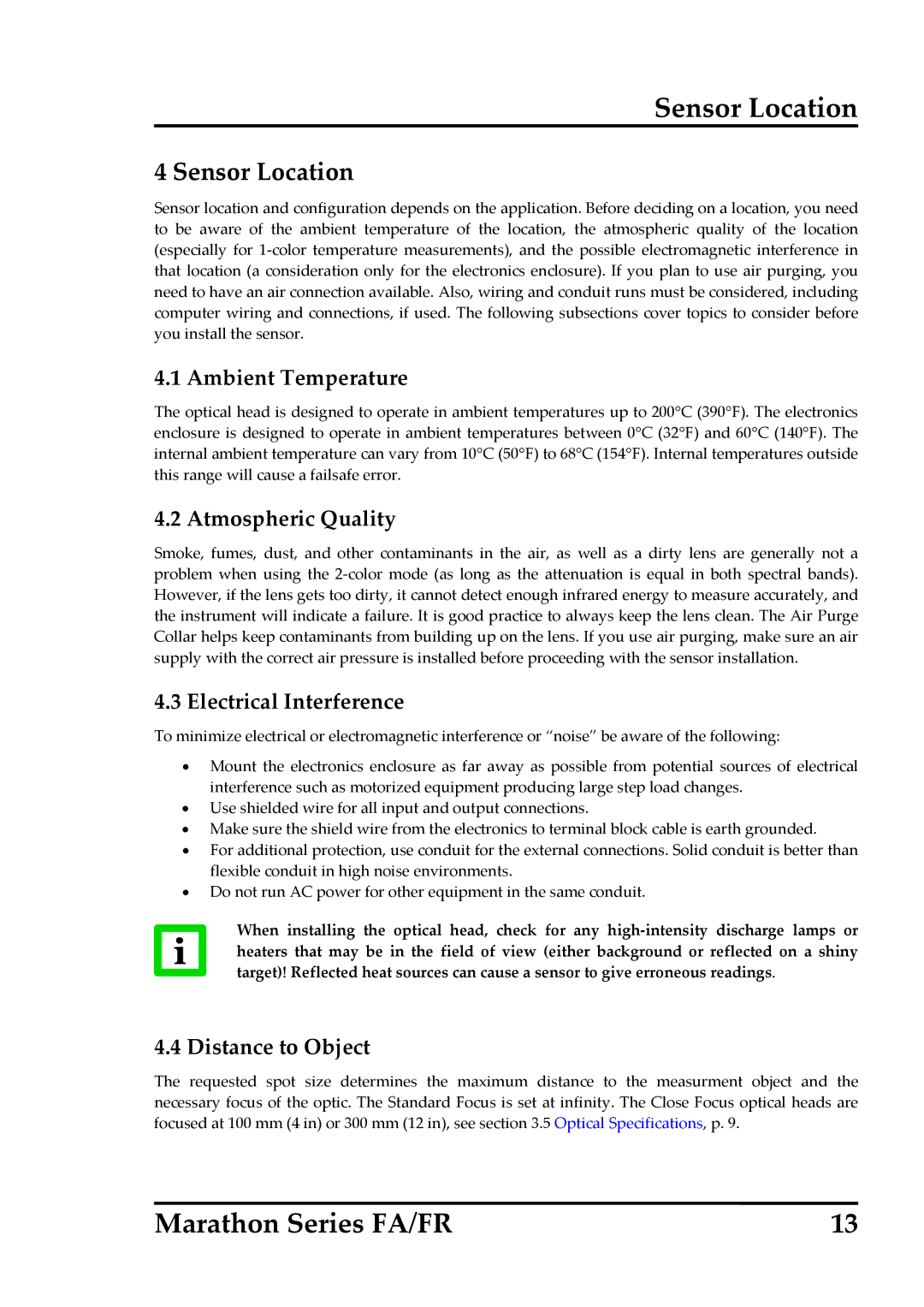
Sensor Location
4 Sensor Location
Sensor location and configuration depends on the application. Before deciding on a location, you need to be aware of the ambient temperature of the location, the atmospheric quality of the location (especially for 1‐color temperature measurements), and the possible electromagnetic interference in that location (a consideration only for the electronics enclosure). If you plan to use air purging, you need to have an air connection available. Also, wiring and conduit runs must be considered, including computer wiring and connections, if used. The following subsections cover topics to consider before you install the sensor.
4.1 Ambient Temperature
The optical head is designed to operate in ambient temperatures up to 200°C (390°F). The electronics enclosure is designed to operate in ambient temperatures between 0°C (32°F) and 60°C (140°F). The internal ambient temperature can vary from 10°C (50°F) to 68°C (154°F). Internal temperatures outside this range will cause a failsafe error.
4.2 Atmospheric Quality
Smoke, fumes, dust, and other contaminants in the air, as well as a dirty lens are generally not a problem when using the 2‐color mode (as long as the attenuation is equal in both spectral bands). However, if the lens gets too dirty, it cannot detect enough infrared energy to measure accurately, and the instrument will indicate a failure. It is good practice to always keep the lens clean. The Air Purge Collar helps keep contaminants from building up on the lens. If you use air purging, make sure an air supply with the correct air pressure is installed before proceeding with the sensor installation.
4.3 Electrical Interference
To minimize electrical or electromagnetic interference or “noise” be aware of the following:
•Mount the electronics enclosure as far away as possible from potential sources of electrical interference such as motorized equipment producing large step load changes.
•Use shielded wire for all input and output connections.
•Make sure the shield wire from the electronics to terminal block cable is earth grounded.
•For additional protection, use conduit for the external connections. Solid conduit is better than flexible conduit in high noise environments.
•Do not run AC power for other equipment in the same conduit.
When installing the optical head, check for any high‐intensity discharge lamps or heaters that may be in the field of view (either background or reflected on a shiny target)! Reflected heat sources can cause a sensor to give erroneous readings.
4.4 Distance to Object
The requested spot size determines the maximum distance to the measurment object and the necessary focus of the optic. The Standard Focus is set at infinity. The Close Focus optical heads are focused at 100 mm (4 in) or 300 mm (12 in), see section 3.5 Optical Specifications, p. 9.
Marathon Series FA/FR | 13 |
